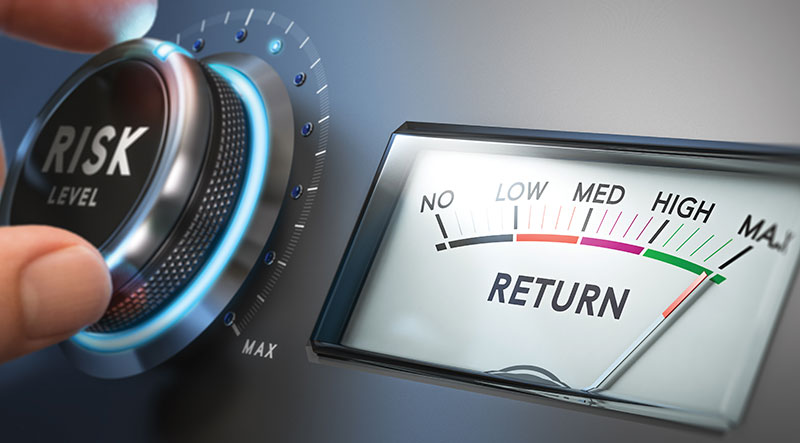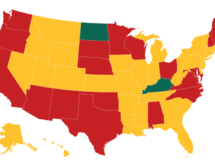WEALTH MANAGEMENT

Kentucky investors learned whether they’d correctly set their risk tolerance when the longest economic expansion in U.S. history came to an end in March in dramatic and volatile fashion.
Since 1915 the average length of time for a market high to fall 20% into a bear market had been 225 days, said Jeffrey Thomison, vice president and strategist for Lexington-based Community Trust and Investment Co. This bear burst from the woods in only 28 volatile days. U.S. stock exchange “circuit breakers” halting selling temporarily were tripped at least four times.
“We spend a lot of time telling FAs (financial advisers), and clients, that a financial plan should withstand volatility,” said Willie Delwiche, investment strategist for Milwaukee-based Baird Investment Strategies, which has large operations in Kentucky. “And while the intensity of the volatility we’ve seen recently, and today (March 9) specifically, is maybe eye-catching, the fact is over time we have periods of volatility. Investors need to be prepared to cope with that.”
March 9 was a circuit-breaker day in which the Dow Jones Index fell just more than 2,013 points, 7.8%, its worst point total day in history. That record was eclipsed three days later when the index dropped 2,352 points on March 12, and March 16 brought a further 2,997-point plunge. The first 13 trading days of March included four days of 1,000-plus point increases, but as this article was written the Dow had fallen 32.7% since its Feb. 12 peak.
- IT’S FREE | Sign up for The Lane Report email business newsletter. Receive breaking Kentucky business news and updates daily. Click here to sign up
Typical long-term investors expect market ups and market downs, but rapid value declines induced by measures to brake the spread of the pandemic COVID-19 coronavirus have never been seen before. The eventual good news, in the experience of veteran wealth managers, is that what goes down must come up.
Stock prices have averaged annual 6.5% gains during the past 150 years through technical revolutions and disruptions, including electricity, automobiles, pandemic, flight, world war, radio, television, oil shocks, the internet, terror attacks on financial centers and economic activity going digital.
Expect continuing volatility in 2020, Thomison said matter-of-factly by phone on March 12. Interviews with Thomison and Delwiche, who also spoke in a genuinely calm manner, had been scheduled days earlier and just happened to be on days that made history. Both are wealth management veterans and offered essentially the same advice they’ve given for years and will continue to counsel to clients.
Guiding investors to an honest assessment of their risk tolerance is a financial adviser’s key goal, along with placing money into a diversity of assets likely to grow and preserve value over the long term. And getting risk tolerance correct might be the bigger challenge.
It’s an abstraction until the days, weeks or even months of price declines occur.
“When the market is going up, clients tend to believe they are more risk tolerant than they really are,” Delwiche said.
Thomison explained that the down days cause more pain than the up days cause joy.
New clients answer questionnaires and are interviewed to assess their risk tolerance, but it is a tricky task.
Delwiche said he likes to explain the difficulty of the process by using the example of questioning someone:
“How do you feel about snakes? And you’re sitting there in someone’s office (and you say), ‘Oh, they’re great. I’m pretty comfortable with them,” he said. In reality, “… That’s quite a bit different from somebody throwing a snake in your lap, and seeing how you react to it.”
Financial advisers say if market volatility literally causes a client to lose sleep, their investment portfolio is not matched to their honest risk tolerance.
“In every portfolio review with clients, we discuss expectation setting, both covering upside potential in the markets as well as downside risk,” Dan Kupkovic, director of investments for Louisville-based ARGI, said by email in early March. “For instance, last year (with the S&P 500 up 30%) it was an ideal time to let clients know that 2019 was an outlier (good) year and to expect more muted returns going forward. This allows investors to deal with the latest market turmoil with more confidence as they were mentally prepared and primed for a return normalization.”
A disciplined approach rather than reactive decision making is always key when setting or resetting a portfolio, the experts said
“It’s OK to realize that you had too much risk. You still want to be disciplined about how you adjust for that,” Delwiche said. “You never want to make an emotion-based reaction when it comes to investing. You can acknowledge that this correction revealed that we had too much risk. Let’s figure out proactive ways to address that rather than reactive ways to take care of that.”
Investors can especially benefit from the advice of a veteran financial adviser if they sense emotion might be driving decisions.
“You never want to get in an emotional state where that bad initial decision gets compounded by a bad reaction,” he said.
History teaches that the stock market will find a bottom and rise again, but the advisers couch caution even in this ultimate optimism. The timing of turns sometimes can be guessed but can’t be known ahead of time.
Thomison, speaking on a day when the Dow Jones index was down 23% from its peak, said the drop offers opportunity for investors who set their course with a long-term horizon. U.S. economic fundamentals were good before the COVID-19 pandemic began to unfold. It seemed likely that prices reflected a fear discount.
“For investors with a long-term horizon, it’s an opportunity to buy stock at discount that will earn well over time,” he said. “But no one knows if it’s the bottom … No one should try to be picking the bottom now. That’s like trying to catch a falling knife.”
Additionally, the speed of recovery can’t be known either.
“The key unknown variable is time,” Thomison said. “No one knows how the virus will unfold.”
As the record expansion came to an end, it should be remembered that the United States has the largest and strongest economy in the world, he said; important fundamentals include job opportunity, wage growth and low unemployment.
“We have shown our resilience time and time again,” he said. “We will bounce back in strong fashion.”
Rather than focusing on whether an investor is putting money into assets as close as possible to their low price, he said, “If it’s not the bottom but a year from now you have a healthy return, you should be happy.”
Today, as always, the financial advisers and those that advise them said there are opportunities for any investor who makes sure they are diversified and in for long term. True diversity in stocks means having assets in all 11 sectors of the U.S. economy as well as diversity within those sectors.
“Long-term investing and diversification are not given enough credit,” Thomison said.
Mark Green is executive edtior of The Lane Report. He can be reached at [email protected].




















Add Comment